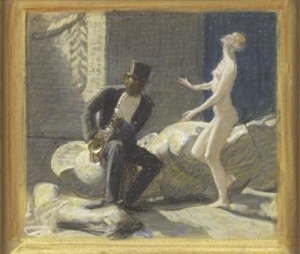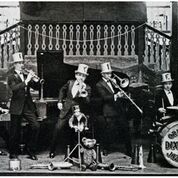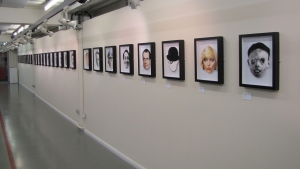
Photos of a divided society
Sanjiv Sachdev reviews Another Kind of Life, Photography on the Margins at the Barbican Art Gallery.
Photographer Mary Ellen Mark’s comment that she is “…interested in people who aren’t the lucky ones, who maybe have a tougher time surviving, and telling their story” could be the motif for this entire exhibition. This unsettling, fine, wide-ranging show displays the work of some 20 photographers who, in disparate but connected ways, capture the lives of those who, for reasons of class, race, gender, age, sexuality and sometimes just inclination, live on the margins of society. Subjects who are often ignored, perhaps seen as taboo, transgressive and disreputable, find centre stage. It offers an alternative and diverse, multi-voiced narrative to the dominant cultural discourse of the last sixty years.
Appropriately in a globalised world, the images range not just from the hidden sub-cultures of the United States and England, but also the dark, raw, seamy underworld of Tokyo’s back streets (Daidō Moriyama and Seiji Kuratabut), the brutal, stifling conformity of Pinochet’s Chile (Paz Errãzuriz) and the Mexico of sex workers, drug wars and cartels (Teresa Margolles). There are also striking images from Soviet Russia, Nigeria, France, the Ukraine and India.
Many of the photographers immerse themselves in the world’s they depict, acquiring a deep understanding of the worlds they seek to represent, sometimes over decades. Many of the pictures bear out Susan Sontag’s view that photos can dignify lives by given them attention - this is worth recording, examining closely, echoing Arthur Miller’s call that ‘attention must be paid’.

Philippe Chancel, Untitled 1982, from Rebel's Paris, Melanie Rio, Fluency France.
Phillipe Chancel’s images of the urban young of 1980s France hark back to the clothes, hairstyles of 1950s United States (as do, in different ways, Chris Steele-Perkins pictures of the Teddy Boys of 1970s Britain) when teenagerdom became a major social presence, what the critic Sean O’Hagan calls a ‘retro-rebellion built on an obsessive attention to image and style’.
Chancel discovered two Parisian gangs - the Vikings and the Panthers. Unlike many of the racist and right-wing gangs of the time, they were multiracial (‘black, blanc, beur’) or mainly black, and can be seen as precursors of the modern ‘Antifa’ and ‘chasseurs de skins’ (skinhead hunters). Rival racist gangs sported the confederate flag as do racists in current US conflicts.
The untitled 1982 images are ones of youthful lust and rebellion against authority, with a certain defiant swagger. Another picture in the show has two young men at the Republique metro stop - implicit is the failure of the Republic to live up to its professed ideals and legacy of its colonial past (‘We are here, because you were there’ in the words of A. Sivanandan).

Philippe Chancel, Untitled 1982, from Rebel's Paris, Melanie Rio, Fluency France.
Even more so than in 1977, the age of the smartphone has meant a glut of images. Many of us have become, to use Sontag’s pungent phrase, ‘image junkies” addicted to “an aesthetic consumerism… it is the most irresistible form of mental pollution”. A camera’s rendering of reality can hide more than it discloses - Brecht’s observation that a photograph of the Krupp works reveals virtually nothing about that organisation remains pertinent. But as Sontag also observed ‘Photographs cannot create a moral position, but they can reinforce one - and can help build a nascent one’.
This show of lives blighted, of lives defiant, of despair, resistance and occasional exuberance contains many surprises and unexpected pearls. Strongly recommended.
Thursday 24 May 7pm, Art Gallery - To celebrate the final week of Another Kind of Life: Photography on the Margins The Choir with No Name will perform in Barbican Art Gallery. Established in 2008, The Choir with No Name is a charity running choirs for homeless and marginalised people in London, Liverpool and Birmingham. Rehearsing weekly and performing in a wide variety of places – from homeless hostels to concert halls – the group harnesses the restorative nature of singing together, reinstating a sense of pride and self-belief that may have been lost.









